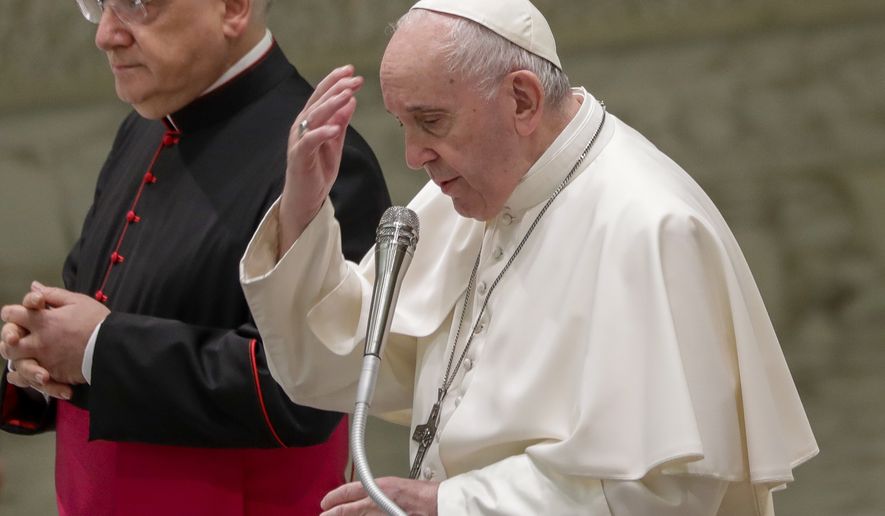OPINION:
In recent weeks, the danger of war between neighboring Azerbaijan and Armenia has caused many to ask how this chaos might be resolved before it directly drags in other powerful players.
On one hand, there is a rare positive moment that the United States, Russia, the European Union, the United Nations, NATO and Pope Francis are on the same side when all have called for an immediate ceasefire. However, Turkey, which is also a NATO member, is doing everything possible to pour gasoline into this fire. Turkish President Recep Tayyip Erdogan’s words and deeds are the major obstacles to stopping the violence.
Sadly, besides Mr. Erdogan, a resounding flurry of absurd chants from some Western media have appeared to relish in this disorder with The New York Times gloating that Russian President Vladimir Putin was so busy stirring up trouble abroad that he neglected his own backyard. Rather than demonstrating an honest concern for the lives of those many innocents involved in the tides of conflict on post-Soviet space, some folks seem to only care about manipulating the emotions of its readers while portraying a skewed narrative of reality.
I believe it is the time for President Trump to make a major effort to resolve this crisis, thus increasing his list of achievements as a peacemaker. This would be in addition to earlier Abraham Accords in the Middle East between the UAE, Bahrain and Israel, which have begun to create a new climate for Arab-Israeli peace unseen in many decades, as well as the deals signed by principals representing Serbia and Kosovo at the White House.
Mr. Trump took the first step by signing the Oct. 1st OSCE Minsk Group Joint call for a ceasefire alongside Presidents Emmanuel Macron and Putin that paved the way for the Oct. 10th ceasefire brokered by Russia and signed by the foreign ministers of Azerbaijan and Armenia.
However, only five minutes after the agreement was to come into effect certain forces seeking discord and instability have done everything possible to derail this positive step toward peace. There are signs of the influx of radical extremist groups like spreading into Azerbaijan from Syria through the guiding hand of Turkey. It is an open secret among the international intelligence community (and one exposed by Gen. Flynn in 2014) that many of the “moderate rebels” fighting to overthrow the Syrian government were actually trained and armed by the U.S. during the Obama years.
Judging from the statements of Russia’s top officials, there is a strong indication that they might take a unilateral action to eliminate these terrorist groups, but it would be much better if it is done jointly with the U.S. and France.
Mr. Trump has demonstrated a commitment toward fighting terrorism and it is the time for him to step in while calling Mr. Erdogan to order.
In the long run, an adequate comprehensive vision is needed from the U.S., such as extending the model of the infrastructure investment strategies outlined in the Serbia-Kosovo peace deal into the Armenia-Azerbaijan conflict and beyond. Visionary megaprojects like the International North South Transportation Corridor (INSTC) are “shovel ready,” with hundreds of subprojects that impact the Caucasus with the long-awaited 316 km Southern Armenia Railway to connect the Black Sea and Persian Gulf through 84 bridges and 60 tunnels.
The INSTC was first established in 2002 under a broad vision of a 7,200 km multimodal network of rail and ports linking northern Russia through Azerbaijan, Armenia, Iran and then to India. Branching points would include all Eurasian Economic Union members, as well as Ukraine, Oman, Turkey and Syria. Since 2018, this complex has begun integrating at a fast pace with China’s Belt and Road Initiative in the form of the Polar Silk Road, which extends the east-west transportation grid deep into Russia’s Arctic.
Why could level-headed nations of the West, led by the U.S., not begin to assist in this new system of long-term, win-win cooperation by helping poor nations to build new industries, create new markets and open up new corridors of cooperation upon which trust and dialogue can finally occur? It is obvious that the benefits are not only economic but can foster a climate of productivity, mass job creation, new skills and abundance in place of the tension, poverty and despair to inflaming hostilities between neighbors.
While we are at it, why not apply these lessons to the Middle East, where Christians, Muslims and Jews of all denominations share so many common needs, from water, education, food production and security? Without these basic needs met through joint collaboration on large-scale infrastructure, then it is certain that the kindling for new wars will always be a fact of life.
No matter how we choose to look at the situation, the fact is that time is running out. If groups committed to peace from all ethnicities and religions across America and Europe were to begin organizing toward concrete and realizable goals as those mentioned above, and if Mr. Trump and other leaders were to offer their political and economic support, then it is certain that the future may yet look bright indeed.
Edward Lozansky is president of the American University in Moscow.




Please read our comment policy before commenting.